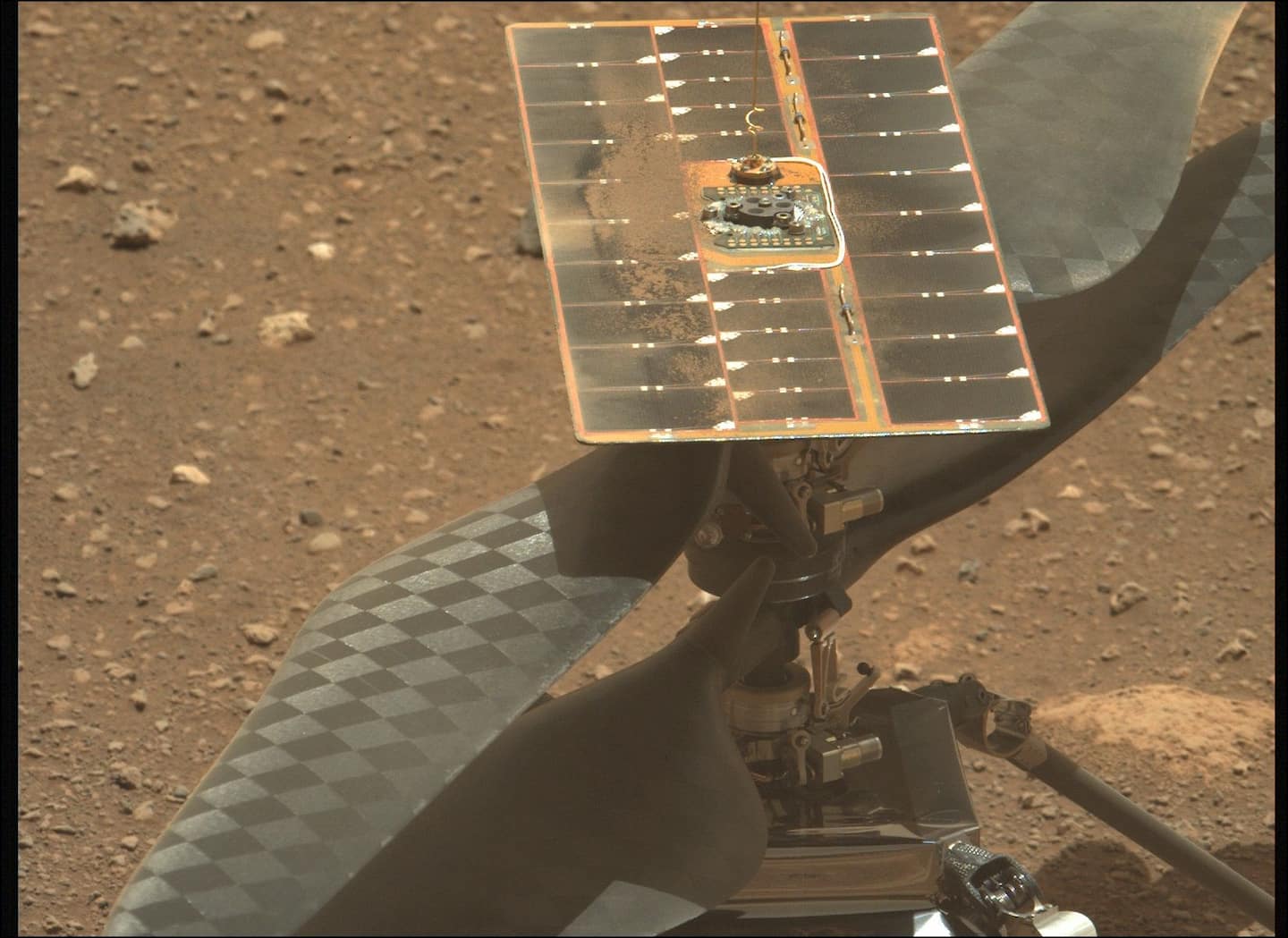NASA again postpones historic Ingenuity helicopter flight on Mars

The situation is now “fluid,” the space administration says.
“Ingenuity is healthy, but it needs a flight software update. While the development of the software is straightforward, validating and uplinking it will take time. We will set a new flight date next week,” NASA said in a tweet.
It’s no wonder NASA is being careful and taking a high-risk, high-reward approach to test-flying the aircraft on the Red Planet. It’s an expensive undertaking that has been years in the making. If successful, it could open avenues for exploration on other planets.
Ingenuity, which rocketed from Earth inside the belly of the space rover Perseverance on July 30, made it to Mars in February and spent just over a week getting ready for the spotlight. Perseverance, a $3 billion project to check for signs of life on Mars, is the main attraction. The robotic drone worth about $80 million is the follow-up act.
The aircraft went through the multiday process of descending from the rover, unfurling its solar panels and powering itself up to prepare for what was supposed to be its first launch on Sunday. However two days before the big event, its rotors failed.
“During a high-speed spin test of the rotors on Friday, the command sequence controlling the test ended early due to a ‘watchdog’ timer expiration,” according to NASA. The timer was designed to stop the operation if it detects issues.
The glitch occurred when the helicopter tried switching from preflight mode to flight mode. NASA said a software update is necessary to address the issue. The agency now has to develop, test and upload new software onto flight controllers. Then it has to reboot Ingenuity to move forward with its mission.
The software trouble postponed what is supposed to be only a brief flight. The plan was for Ingenuity to take off, hover for about 30 seconds, then safely land in place. It’s an easy accomplishment for drones on Earth, but a challenging feat on the Red Planet, currently more than 100 million miles away.
Mars’s atmosphere is thinner than Earth’s by a ratio of about 100, making liftoff more difficult. To compensate for this, Ingenuity’s rotors will make about 2,500 revolutions per minute (RPM). That’s far faster than a passenger helicopter on Earth.
Also, since Mars is so far away, joystick control isn’t an option. The entire operation has to happen autonomously. The helicopter also contends with temperatures that can drop to minus 130-degrees Fahrenheit, pushing the tiny aircraft’s parts to their limits.
Still, NASA hopes the eventual liftoff will serve as the kickoff of five aerial demonstrations, each designed to be more challenging than the previous one, over about 30 days. Step one was to prove the craft can fly. Step five is to test how far it can go. The goal for Ingenuity is to expand how the space agency can investigate other planets.
“As we’re exploring the surface, we might find terrain that is too hazardous, too distant, or too large of an area for a rover to do the job effectively or efficiently,” said Dave Lavery, program executive for the Ingenuity Mars Helicopter at NASA’s headquarters in Washington.
Once a launch date is set, NASA plans to beam the helicopter’s flight plan to Mars in advance and wait for the helicopter to wake up, complete the task and send back information on its performance.
Then, there’s always the potential for crosswinds and unforeseen mishaps. While NASA has never attempted a mission quite like this one, about half of the missions on Mars have failed.
The European Space Agency’s Schiaparelli lander crashed on the Red Planet in 2016 due to a data glitch. NASA’s Mars Polar Lander launched in January 1999 for the frigid terrain near Mars’s south pole to dig for water ice but crashed on arrival due to an engineering issue.
One thing stands in Ingenuity’s favor: Gravity.
The force pulling objects to the ground is more forgiving on Mars, with about one-third the force compared with Earth. That means the drone only has to generate one-third of the lift to launch from the surface.
The helicopter carries only the essentials — two cameras, along with a nod to a past aviation milestone.
It’s been more than a century since Orville and Wilbur Wright’s glider took flight in North Carolina, ushering in the age of air transportation. NASA attached a piece of fabric from the 1903 flier underneath the helicopter’s solar panel to mark the moment.
“Just as Ingenuity was inspired by the Wright brothers, future explorers will take off using both the data and inspiration from this mission,” Thomas Zurbuchen, associate administrator for science at NASA, said in a statement.
The aircraft had already demonstrated it was possible to fly in Mars-like conditions back on Earth. In 2019, well before the device rocketed to Mars inside Perseverance, it was put through tests inside a cylindrical vacuum chamber at the Jet Propulsion Laboratory in Pasadena, Calif.
Air was sucked out and carbon dioxide was pumped into the 85-foot-tall chamber to mimic the atmosphere on Mars. Martian temperature shifts were replicated, as was the potential for crosswinds. The helicopter passed and was moved to Lockheed Martin Space in Denver to meet the rover that carried the helicopter against its belly all the way to Mars.
The area where NASA hopes to begin test flights is less than 50 yards from where Perseverance touched down in Jezero Crater almost two months ago.
Weeks later, the rover dropped Ingenuity off on a flat patch of land just before continuing on its primary mission to hunt for signs of past life. Scientists will use the instruments aboard the rover to collect soil samples for potential return-to-Earth missions.






